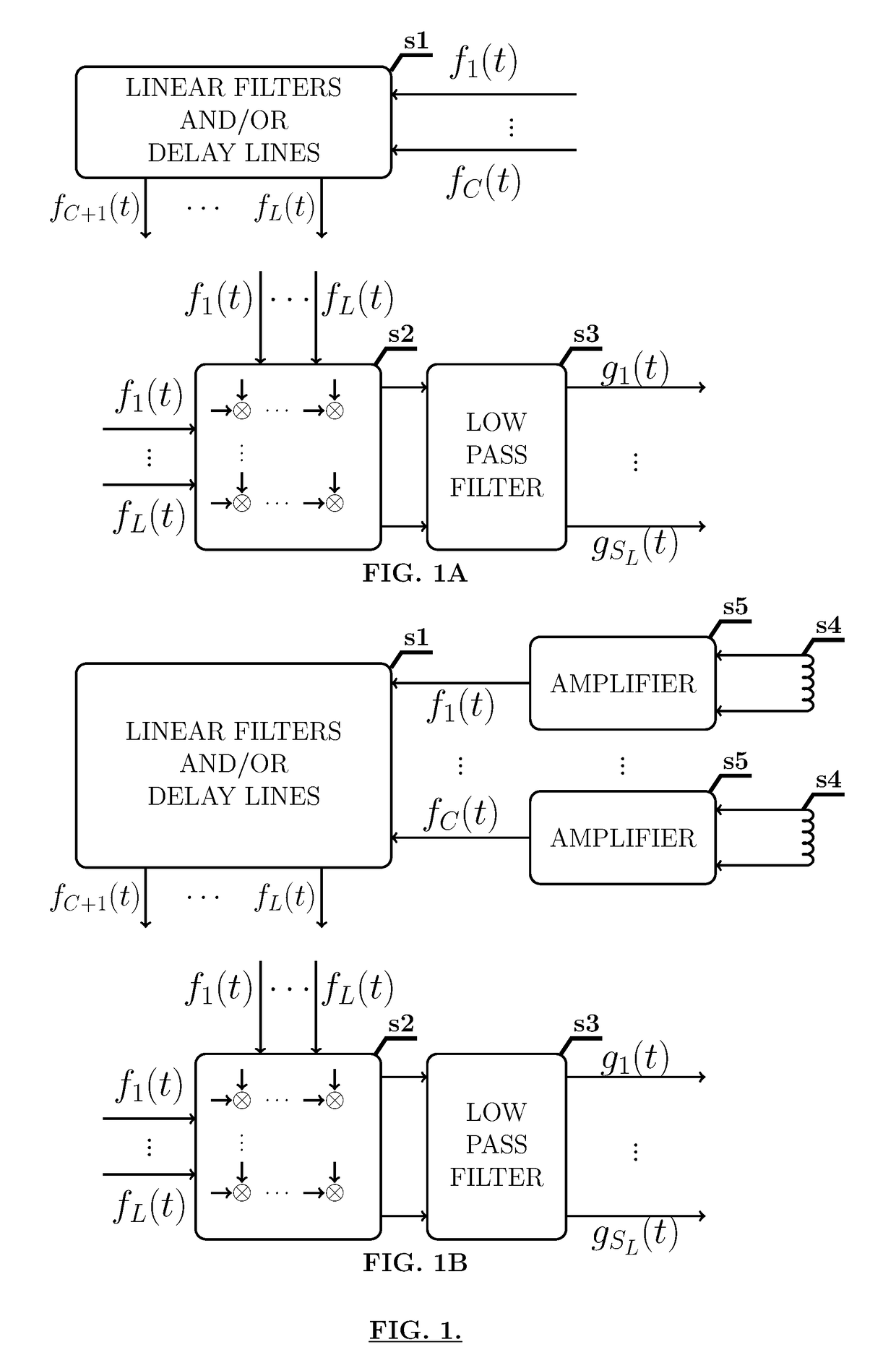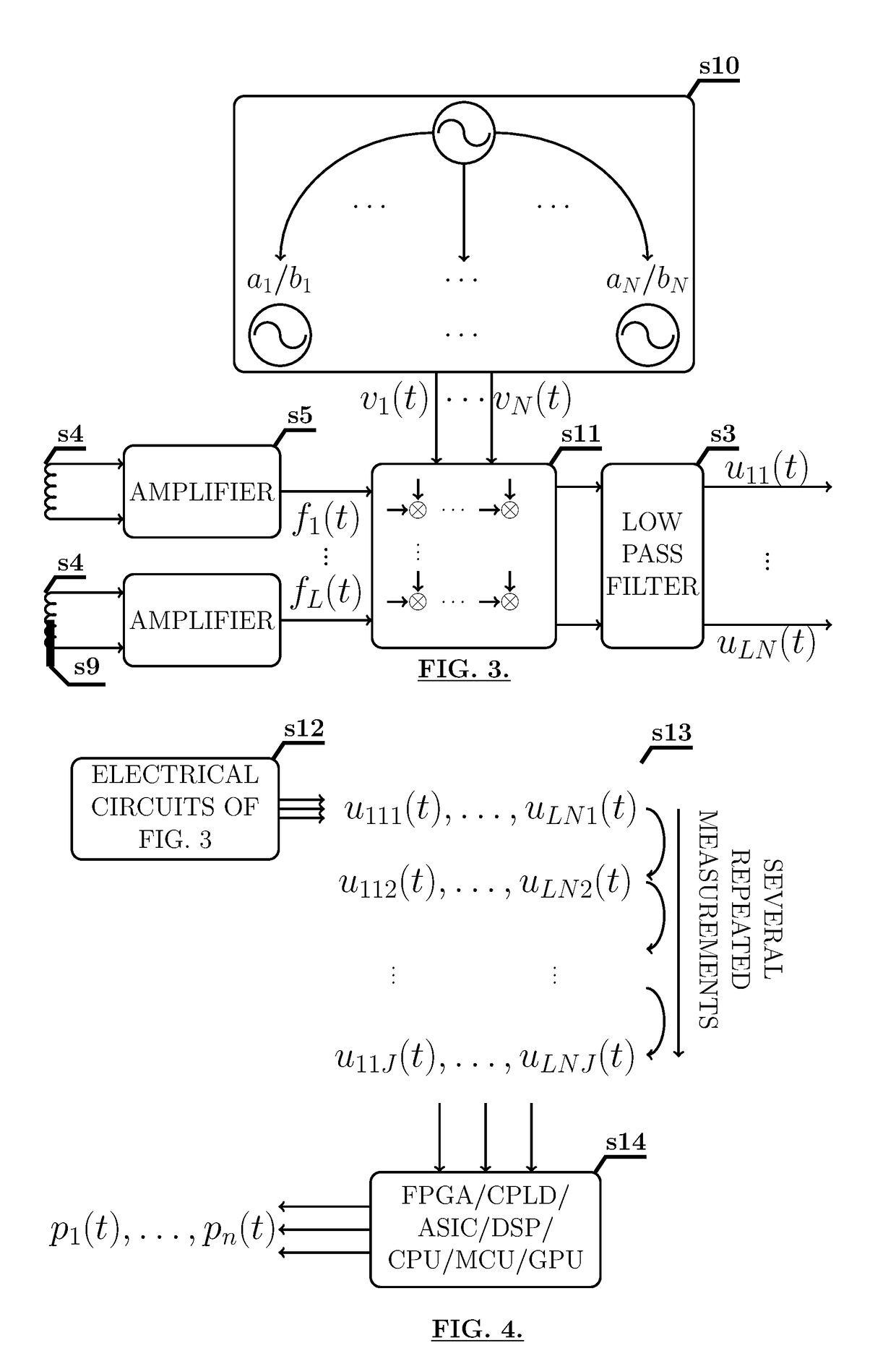Real-Time Methods for Magnetic Resonance Spectra Acquisition
a magnetic resonance and spectra acquisition technology, applied in the field of nuclear magnetic resonance (nmr) spectroscopic techniques, can solve the problems of unreasonably sophisticated use of magnets, large number of magnetized pieces, and limited application of nmr in laboratory environments
- Summary
- Abstract
- Description
- Claims
- Application Information
AI Technical Summary
Benefits of technology
Problems solved by technology
Method used
Image
Examples
Embodiment Construction
Elegant NMR
[0238]The Enhanced multi-nucLEar Generation, Acquisition, and Numerical Treatment of Nuclear Magnetic Resonance spectra (ELEGANT NMR) is a processing method constructed according to the following scheme.
[0239]Consider FIG. 1B: One or several wide-band coils and / or optical detectors s4 receive very weak signals that are usually amplified by one or more sequential amplifiers s5. The signals are abbreviated as fl(t), l=1, . . . , C, where C is the total count of input signals and t is the time domain variable of the measurements. These signals are forwarded to a block s1 of several linear filters and / or delay lines. These linear filters and delay lines may be comprised of passive components or operational and / or differential amplifiers and / or other analog circuits, or may be completely implemented digitally. The resulting signals are abbreviated as fl(t), l=C+1, . . . , L. Each linear filter or delay line has one input and one output, acts on only one input signal, and deliv...
PUM
 Login to View More
Login to View More Abstract
Description
Claims
Application Information
 Login to View More
Login to View More - R&D
- Intellectual Property
- Life Sciences
- Materials
- Tech Scout
- Unparalleled Data Quality
- Higher Quality Content
- 60% Fewer Hallucinations
Browse by: Latest US Patents, China's latest patents, Technical Efficacy Thesaurus, Application Domain, Technology Topic, Popular Technical Reports.
© 2025 PatSnap. All rights reserved.Legal|Privacy policy|Modern Slavery Act Transparency Statement|Sitemap|About US| Contact US: help@patsnap.com



